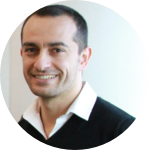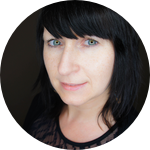About This Project
Skin fibrosis affects more than 100 million people every year, and can manifest in association with systemic diseases (e.g. scleroderma) or locally following injuries1,2. Failure to terminate the repair processes in an organized manner results in hypertrophic scars or keloids3-6. These scars grow beyond their boundary and never heal. Despite their high prevalence they lack an effective treatment regimen. We hypothesize that controlling epigenetic switches in fibroblasts can induce their healing.
Ask the Scientists
Join The DiscussionWhat is the context of this research?
Fibrosis is characterized by excessive proliferation and pathological extracellular matrix (ECM) deposition by fibroblasts, the principal cell type of the connective tissue. It affects various organs including the skin, liver, kidney and the lung, and can cause life-threatening tissue damage1,2. In the skin, fibrosis can manifest in association with systemic diseases such as systemic sclerosis (scleroderma) or locally following injuries leading to so-called hypertrophic scars3 or keloids4-6. These abnormal scars behave like benign tumours and grow beyond the margins of the original wound3-6. Apart from being cosmetically disturbing, keloids can be painful and itchy and severely impair patients’ wellbeing7.
What is the significance of this project?
Skin fibrosis affects more than 100 million people every year and has thus a global impact2. Despite their high prevalence and the identification of Wnt and TGFb signalling as key pathways in fibrosis8-12, keloids display a high degree of resistance to treatment and recurrence. Thus, there is an urgent need for an effective therapy.
Emerging evidence indicates an unanticipated heterogeneity and plasticity among skin fibroblasts with several subsets exerting distinct functions in physiology and regeneration but also in pathologies like scarring and fibrosis9,10,13-21. How fibroblast fate decisions are controlled is unknown, but they might be regulated epigenetically.
What are the goals of the project?
We hypothesize that epigenetic modifications determine fibroblast fate. Therefore investigating how the switch between fibroblast proliferation/activation and differentiation is controlled in fibrosis is of particular interest, and might provide new treatments for fibrotic skin diseases.
Using a novel methodology of combined single cell epigenomics and transcriptomics of human patient tissue (scleroderma, hypertrophic scars, keloids) and healthy skin we aim to address
1. if and which epigenetic modifications are involved in the pathogenesis of skin fibrosis and
2. whether specific epigenetic drugs affect fibroblast proliferation and differentiation, and thus represent new therapies for fibrotic skin diseases and excessive scarring.
Budget
We would like to use a novel technology called "combined Single-cell-Assay-for-Transposase-Accessible-Chromatin (scATAC) and single-cell-RNA sequencing (scRNA-Seq)" to determine the epigenome and transcriptome of pathogenic cells in hypertrophic scars and keloids (and healthy skin tissue as a control; 3 samples per condition). This screen will provide novel insights in the development of fibrosis, its associated signalling pathways and thus novel targets for drug development. The assay and data analysis will be performed in collaboration with single cell technology experts within our department and at the Karolinska Institutet in Stockholm.
We will then test if promising epigenetic modifiers identified in the screen are disregulated in patient tissue, and if pharmacological or genetic inhibition of these proteins in in-vitro assays can block fibrosis and thus represent promising targets for the treatment of fibrotic diseases like keloids.
Endorsed by
 Project Timeline
Project Timeline
We expect to complete the project within 9 months, starting in January 2021. In a first step we have to collect patient biopsies and skin from healthy donors, and prepare cell suspensions for the scATAC/scRNA-Seq screen. cDNA library preps and the assay itself will be performed by our collaborators and experts in this technique, which wil take approximately 2 months. Data analysis will be followed by extensive validation of the most promising epigenetic modifiers in in vitro assays.
Jan 21, 2021
Project Launched
Mar 01, 2021
Collection of patient tissue and cell isolation/preparation
May 01, 2021
combined epigenomic/transcriptomic screen of patient samples
Jun 01, 2021
data analysis and identification of most promising epigenetic modifiers
Sep 01, 2021
Validation in histological patient samples and in in vitro assays
Meet the Team
Affiliates
Team Bio
The Lichtenberger lab has identified several functionally distinct fibroblast subsets in human skin and now aims at dissecting their role in skin pathologies including skin cancer, inflammatory skin diseases and skin fibrosis. Using cutting-edge technology such as single cell epigenomics and transcriptomics and CyTOF imaging, our goal is to discover novel therapies for these skin pathologies.
If you want to know more about our team, visit us @ www.lichtenbergerlab.org !
Beate Lichtenberger
Beate Lichtenberger obtained her PhD from the
University of Vienna in 2009. She completed her doctorate studies in Genetics and Microbiology under the supervision of Prof. Maria Sibilia at the Institute of Cancer Research in Vienna, where she addressed how EGFR, VEGFR and ITGB1 signalling cooperate in epidermal stem cells to promote cancer and control immune responses of the skin. In 2011, Beate joined the lab of Prof. Fiona Watt, one of the world-leading labs in skin and stem cell biology, at the University in Cambridge and later at King’s College London as a postdoctoral fellow. She dissected niche signalling in the skin, and identified that skin dermis comprises two fibroblast lineages with different functions in skin physiology and pathology. Since April 2016 she is a principal investigator at the Department of Dermatology at the Medical University of Vienna.
Beate has received numerous awards and honours including: Beverly McKinnel Award 2006, Boehringer Ingelheim Fonds PhD Fellowship, THP Research Award 2010, sanofi-aventis Research Award 2010, EMBO and FEBS Long-term Fellowships, Heinz Maurer Award for Dermatological Research 2014, Award for Innovative Cancer Research from the City of Vienna 2014, the Unilever Award/ Austrian Dermatology Award 2016, and the Research Award 2018 of the Austrian Society of Dermatology.
Lab Notes
Nothing posted yet.
Additional Information
The proposed research for which we are seeking funding is part of a larger research project ongoing in the lab. Of note, the ethics approval for the isolation of and research on human skin tissue has been granted to our clinical collaborators. Written informed patient consent will be obtained before tissue collection in accordance with the Declaration of Helsinki, and with approval from the Institutional Review Board.
If you are interested in meeting the team of this young and dynamic lab and other projects we are working on, visit us @ http://www.lichtenbergerlab.or... !
REFERENCES:
1 Wynn, T. A. J Pathol 214, 199-210, doi:10.1002/path.2277 (2008)
2 Bayat, A., McGrouther, D. A. & Ferguson, M. W. J. BMJ 326, 88-92, doi:10.1136/bmj.326.7380.88 (2003).
3 Rabello, F. B., Souza, C. D. & Farina Junior, J. A. Clinics (Sao Paulo) 69, 565-573, doi:10.6061/clinics/2014(08)11 (2014).
4 Atiyeh, B. S., Costagliola, M. & Hayek, S. N. Annals of plastic surgery 54, 676-680 (2005).
5 Bran, G. M., Goessler, U. R., Hormann, K., Riedel, F. & Sadick, H. International journal of molecular medicine 24, 283-293 (2009).
6 Butler, P. D., Longaker, M. T. & Yang, G. P. Journal of the American College of Surgeons 206, 731-741, doi:10.1016/j.jamcollsurg.2007.12.001 (2008).
7 Biljlard, E. et al., Acta Derm Venereol 97(2):225-229. doi: 10.2340/00015555-2498 (2017)
8 Hamburg-Shields, E., DiNuoscio, G. J., Mullin, N. K., Lafyatis, R. & Atit, R. P J Pathol 235, 686-697, doi:10.1002/path.4481 (2015).
9 Lichtenberger, B. M., Mastrogiannaki, M. & Watt, F. M. Nat Commun 7, 10537, doi:10.1038/ncomms10537 (2016).
10 Mastrogiannaki, M., Lichtenberger, B. M. et al. J Invest Dermatol 136, 1130-1142, doi:10.1016/j.jid.2016.01.036 (2016).
11 Akhmetshina, A. et al. Nat Commun 3, 735, doi:10.1038/ncomms1734 (2012).
12 Sato, M. Acta Derm Venereol 86, 300-307, doi:10.2340/00015555-0101 (2006).
13 Sriram, G., Bigliardi, P. L. & Bigliardi-Qi, M. European journal of cell biology 94, 483-512, doi:10.1016/j.ejcb.2015.08.001 (2015).
14 Driskell, R. R. et al. Nature 504, 277-281, doi:10.1038/nature12783 (2013).
15 Jiang, D. et al. Nat Cell Biol 20, 422-431, doi:10.1038/s41556-018-0073-8 (2018).
16 Rinkevich, Y. et al. Science 348, aaa2151, doi:10.1126/science.aaa2151 (2015).
17 He, H. et al. J Allergy Clin Immunol, doi:10.1016/j.jaci.2020.01.042 (2020).
18 Korosec, A. et al. J Invest Dermatol 139, 342-351, doi:10.1016/j.jid.2018.07.033 (2019).
19 Philippeos, C. et al. J Invest Dermatol 138, 811-825, doi:10.1016/j.jid.2018.01.016 (2018).
20 Tabib, T., Morse, C., Wang, T., Chen, W. & Lafyatis, R. J Invest Dermatol 138, 802-810, doi:10.1016/j.jid.2017.09.045 (2018).
21 Vorstandlechner, V. et al. FASEB J 34, 3677-3692, doi:10.1096/fj.201902001RR (2020).
Project Backers
- 8Backers
- 4%Funded
- $701Total Donations
- $87.63Average Donation


